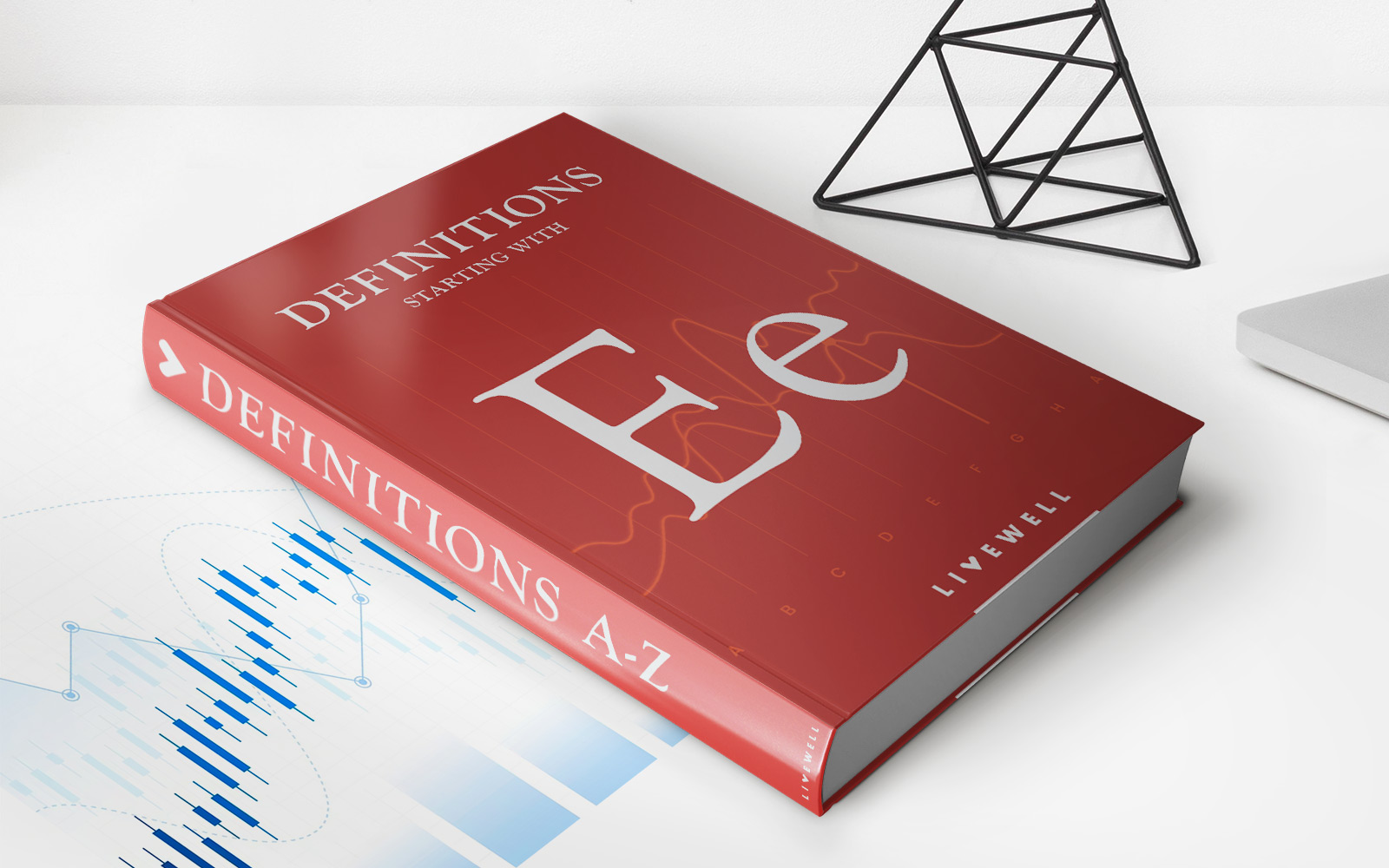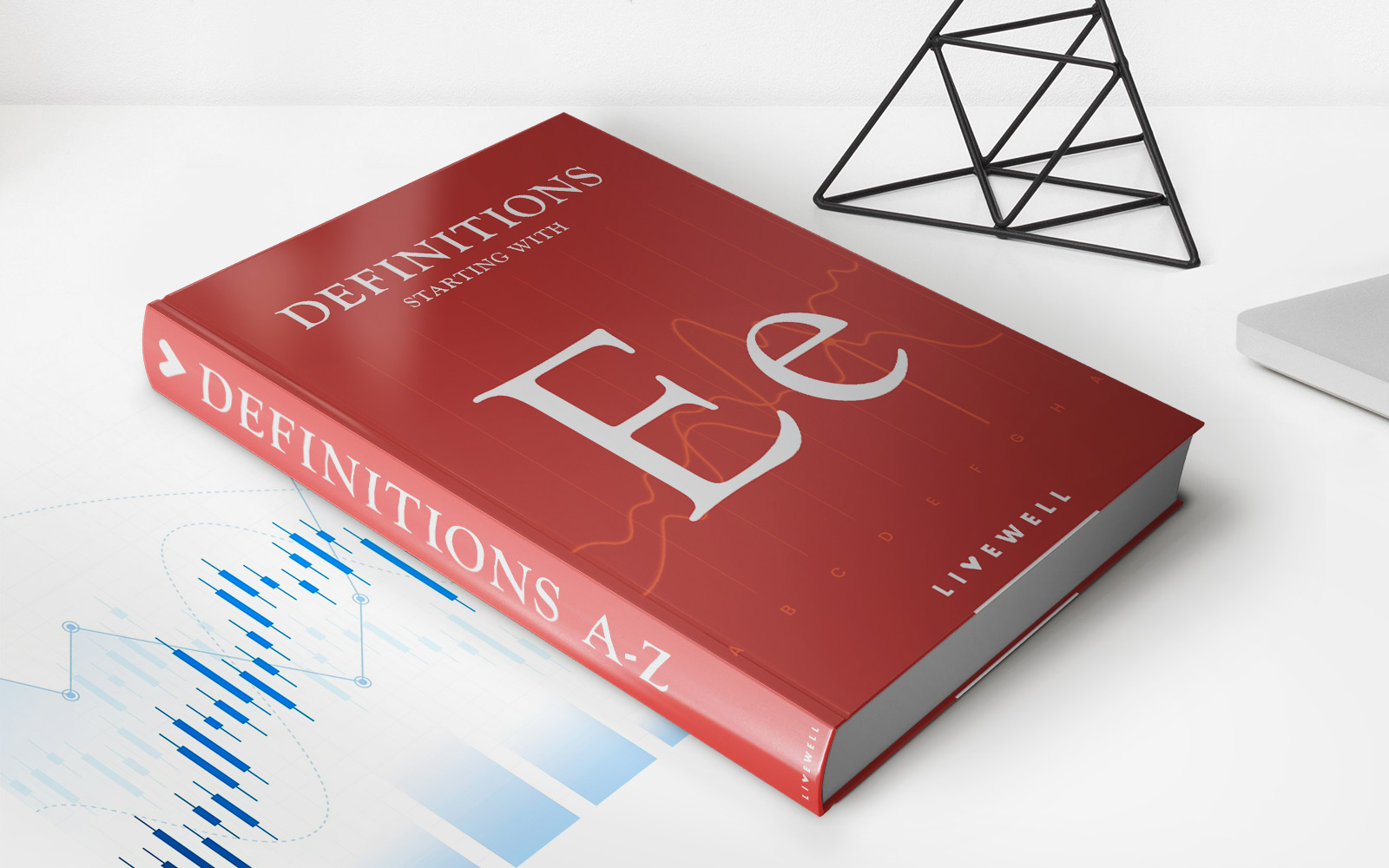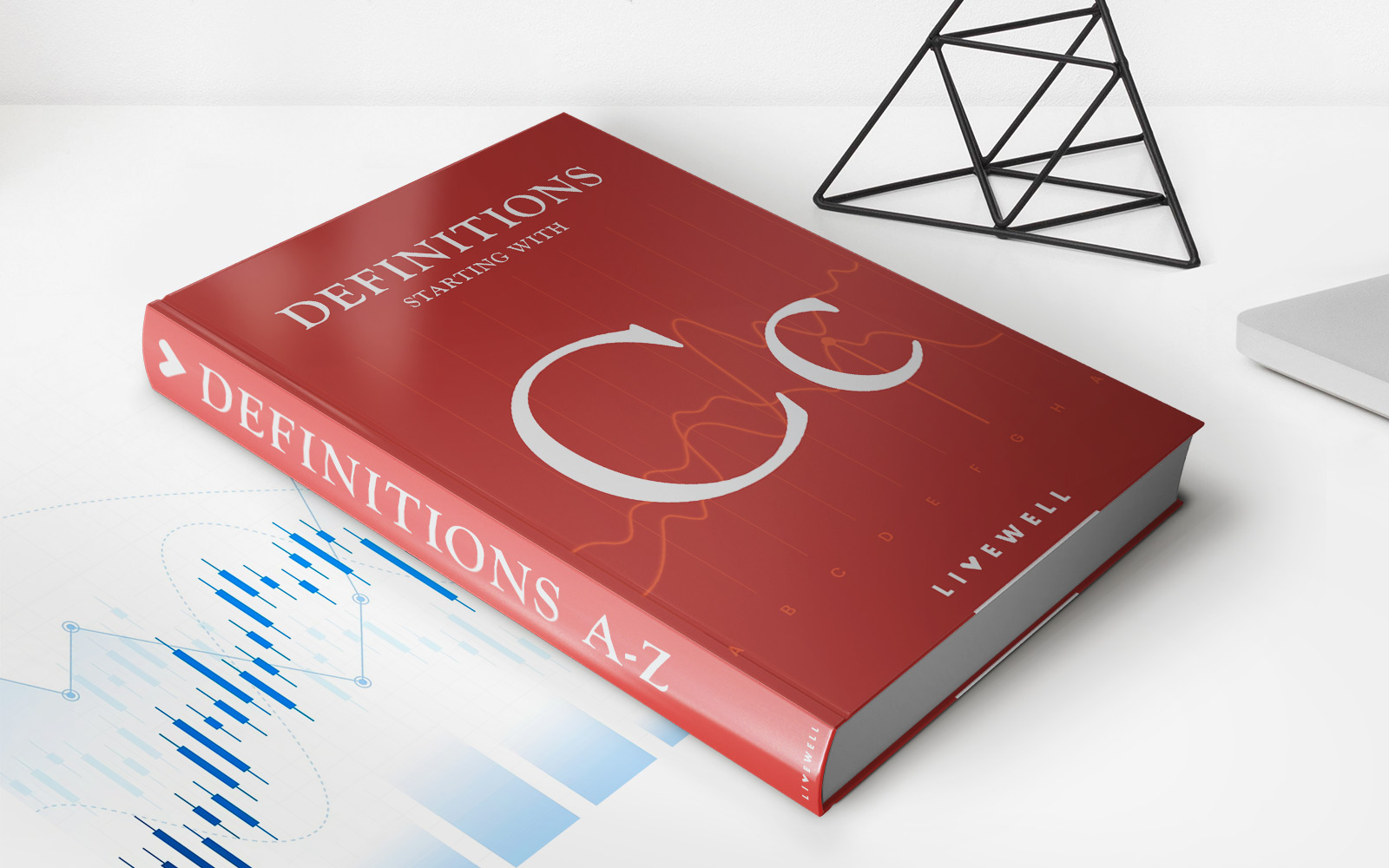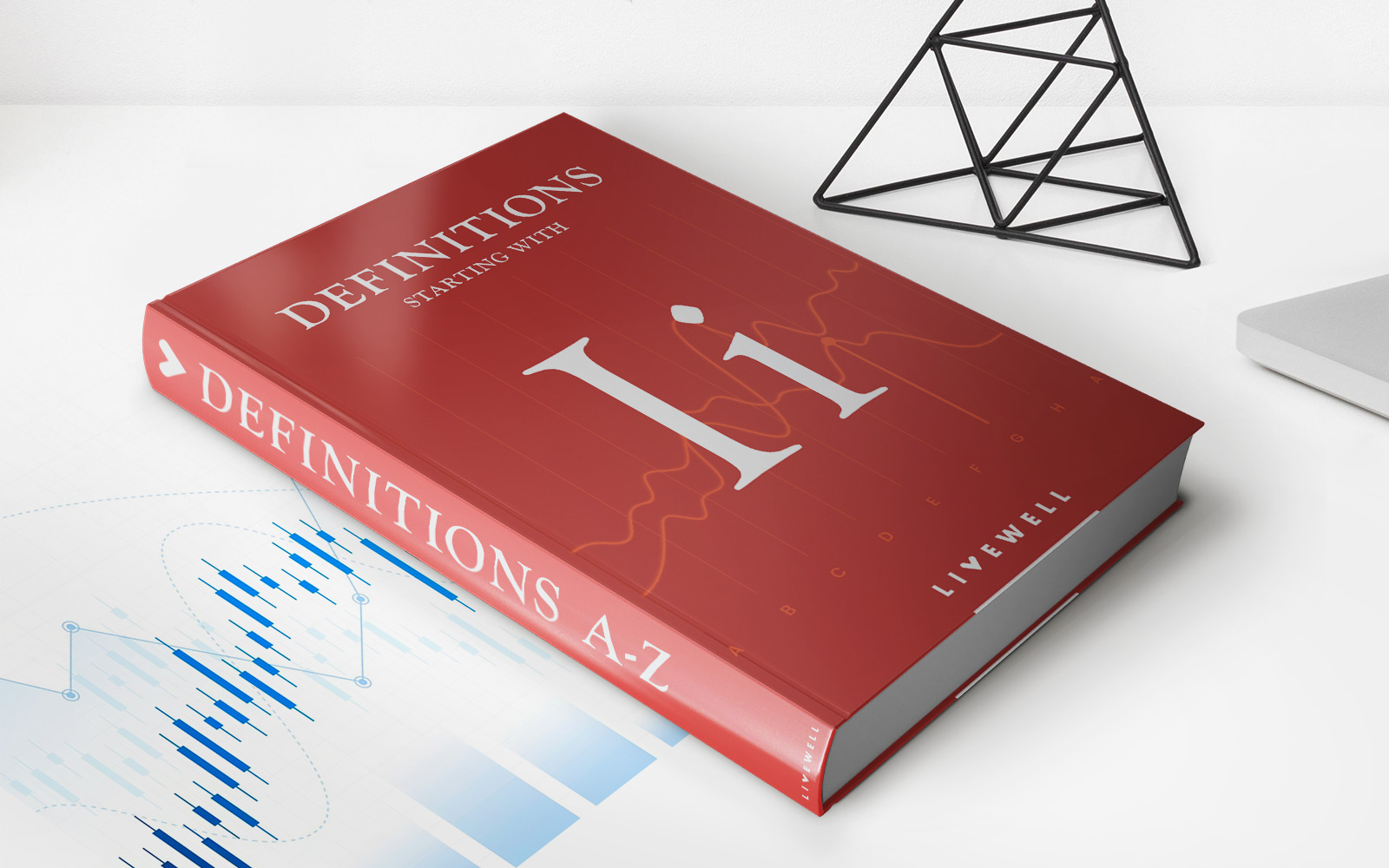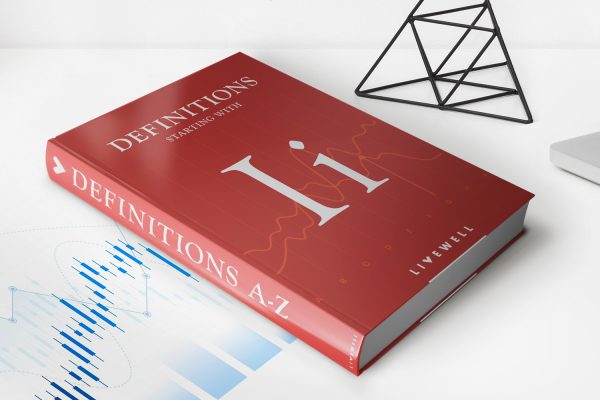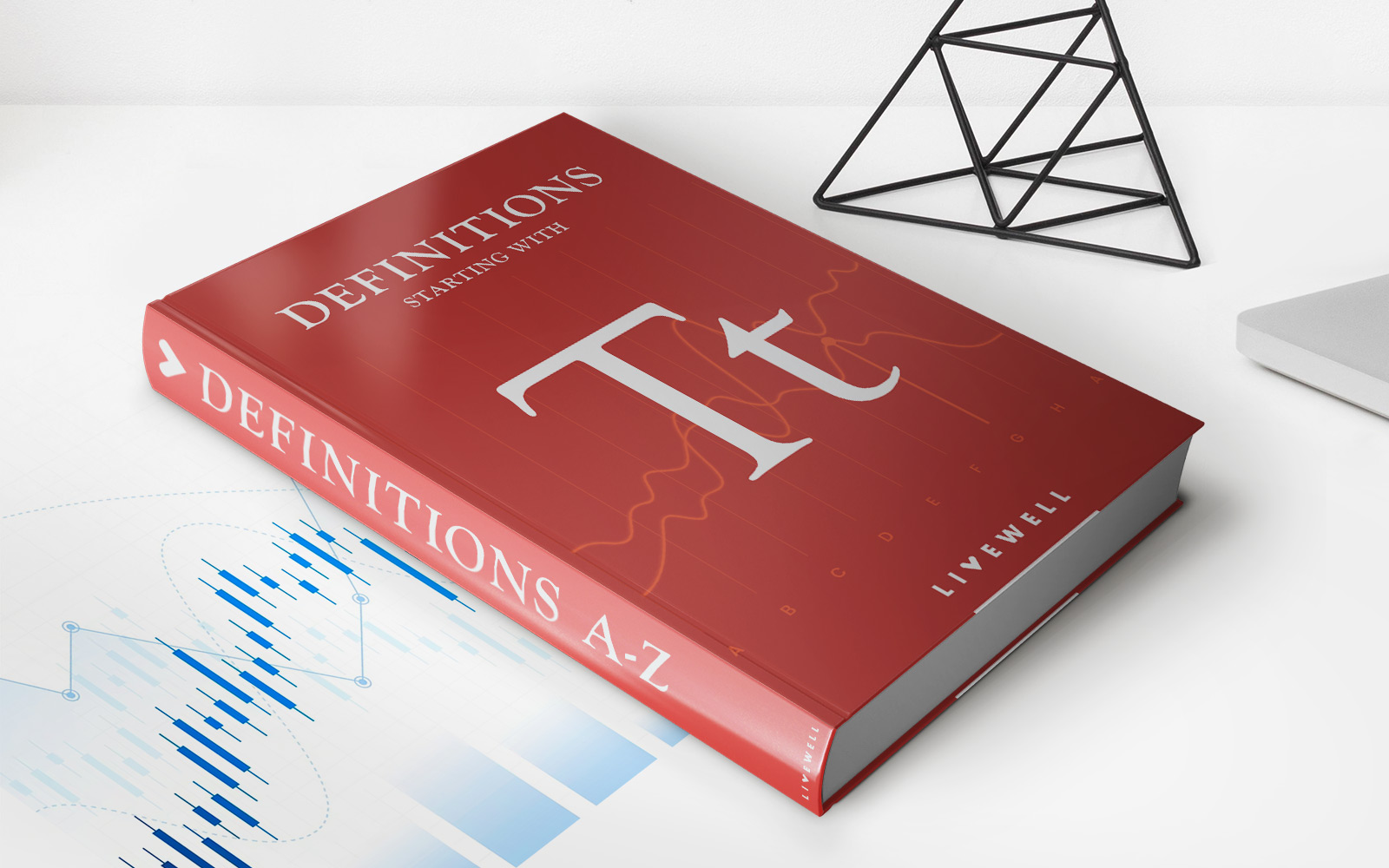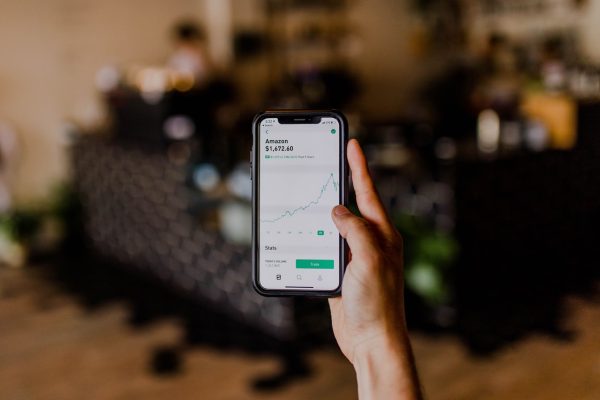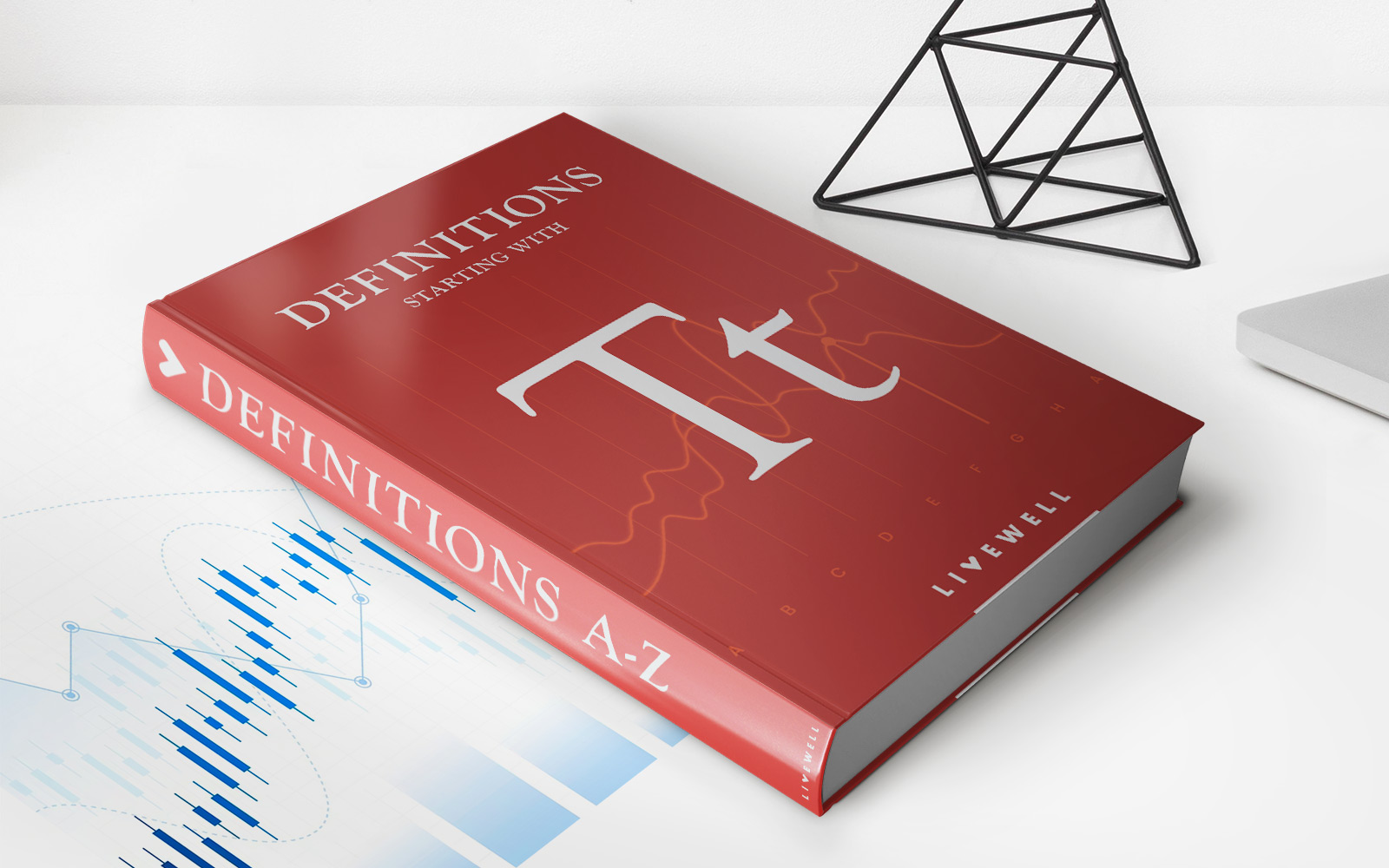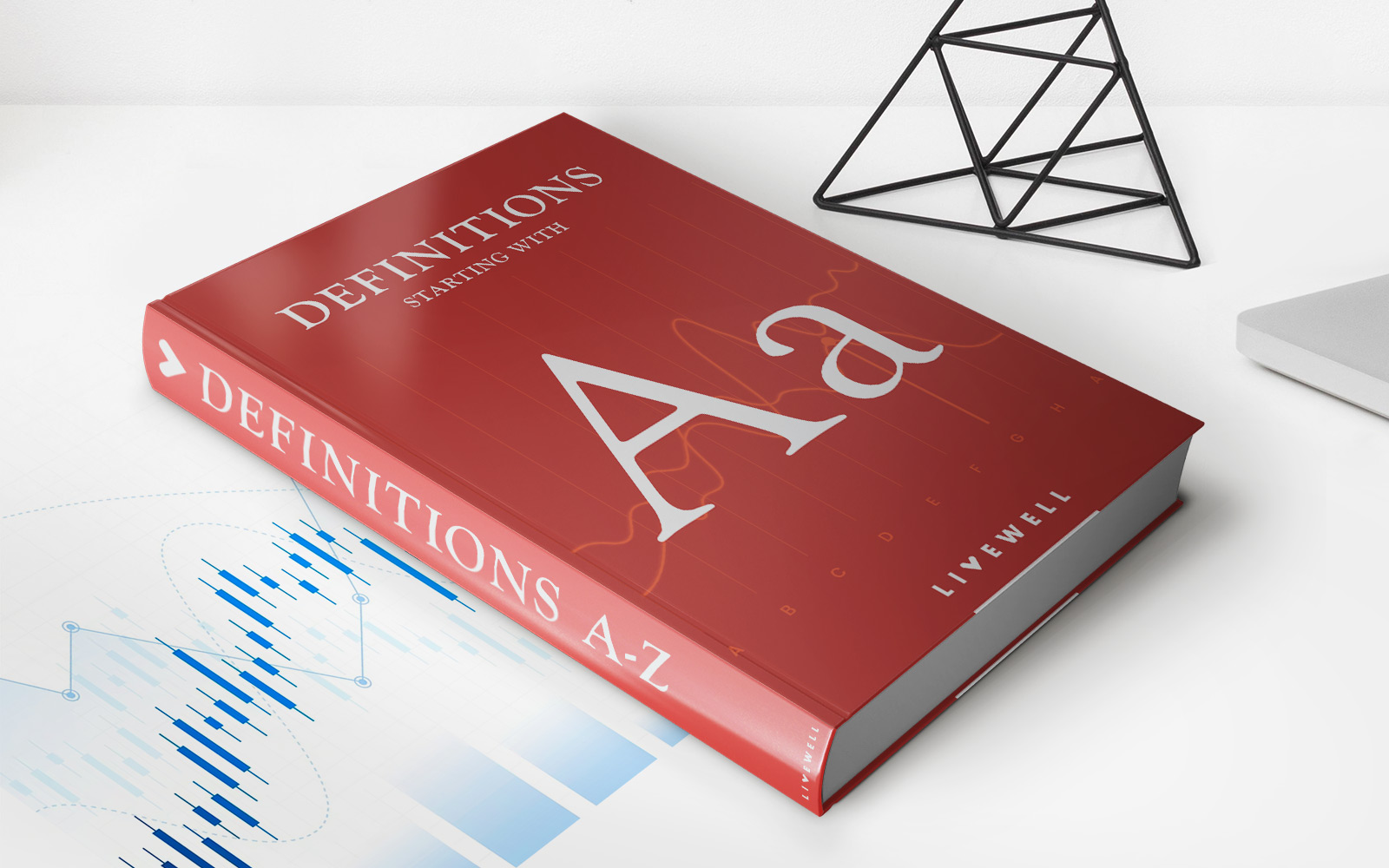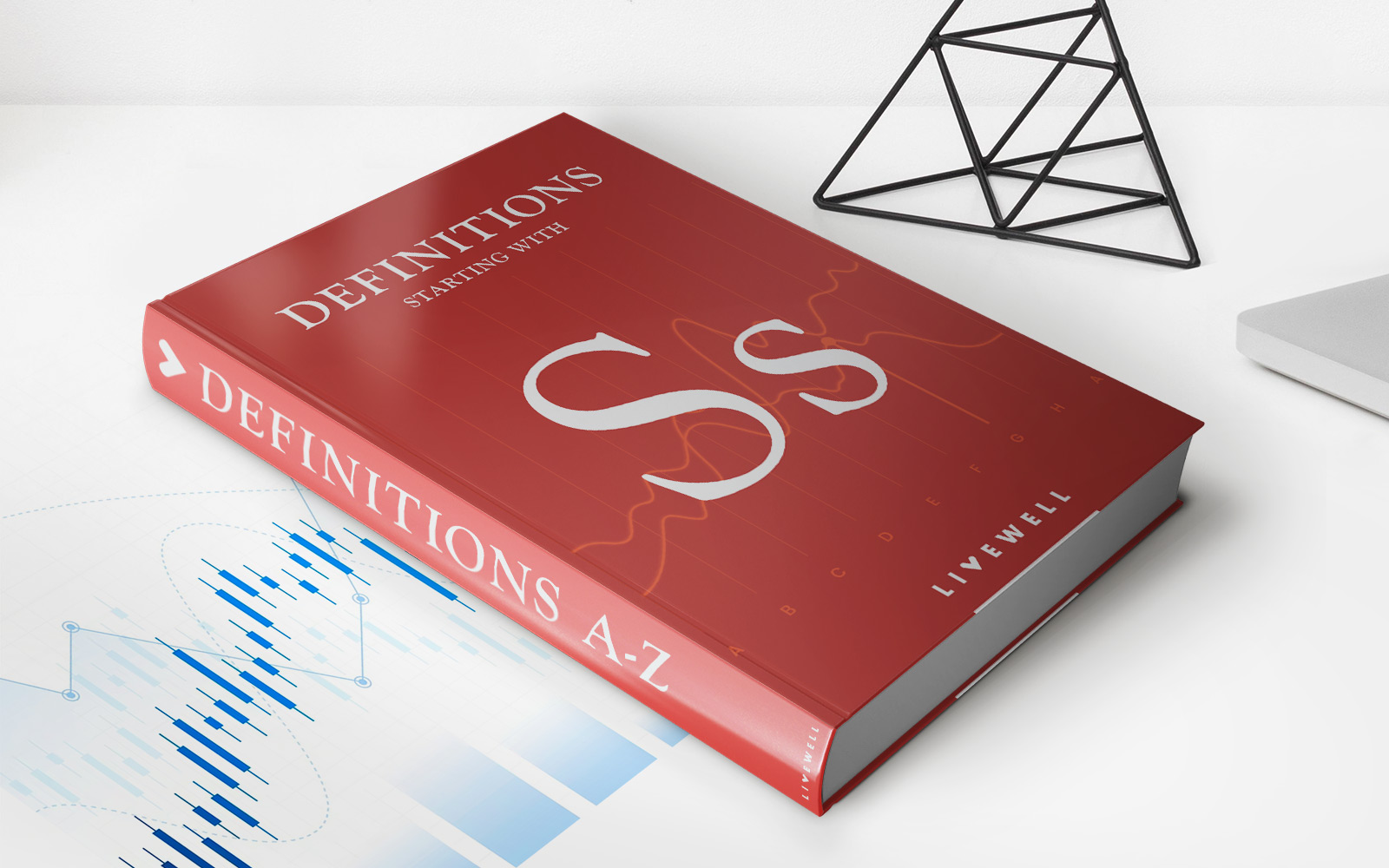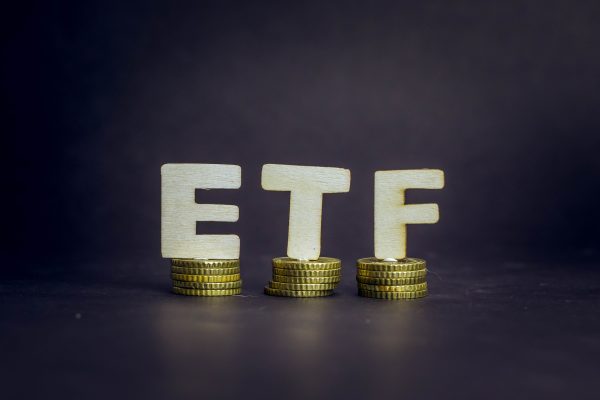
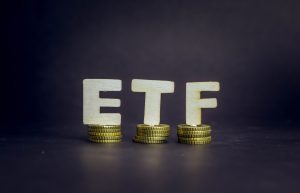
Finance
Best ETFS of 2020: The Top 25 To Watch Out For
Modified: September 6, 2023
Discover the Best ETF's of 2020. Learn everything you need to know about the top ETFs and how to buy and sell them with our complete guide.
(Many of the links in this article redirect to a specific reviewed product. Your purchase of these products through affiliate links helps to generate commission for LiveWell, at no extra cost. Learn more)
How Does An ETF Work?
Should You Invest In An ETF?
Who Are ETFs For?
What Are The Advantages Of An ETF?
Looking at the lens of a viewfinder, ETFs are relevant to stocks. These are a group of securities traded in an exchange. This is where exchange-traded funds gets it’s namesake. ETFs can include all the different channels in terms of investments.
Investing in ETFs presents an advantage. In the sense that fewer broker commissions and expense ratios are made compared to purchasing individual stocks.
ETFs and mutual bonds may pose as quite similar to the other. Sometimes, may even be confused. But, one big difference is that an ETF’s price fluctuates at a constant rate. ETFs concentrate on either the global market or the US niche.
For investors that are looking to build their portfolio, ETFs are your best bet. It’s a good choice for those looking to expand it. Each ETF has different fundamental assets behind them. So when you buy an ETF, this gives you varied types of investments to choose from.
ETF Types
Here are some different types of exchange-traded funds among many (ETFs):
- Bond ETFs
- Inverse ETFs
- Currency ETFs
- Industry ETFs
- Commodity ETFs
Each of the five mentioned above is rather self-explanatory. However, do take note that Inverse ETFs are exchange-traded notes (ETNs). That is; bonds backed typically by banks, that are traded like a stock.
Each of these ETFs is straightforward and intelligible. Yet, it is important to remember that the exact opposite of an ETF is called exchange-traded notes (ETNs). These are bonds that are usually financed by banks. Often these trades are made quite similar to stocks.
If you’re feeling quite unsure about getting an ETN, check with your broker. The best move is to find the most suitable ETN to build your portfolio in this given period.
25 Best ETFs Of 2020
We picked out the 25 best exchange-traded funds that have blown others out of the water.
These are handpicked from different sectors, because we want you to have options.
Vanguard S&P 500 ETF

Photo from investor.vanguard.com
It’s the best one across the board. Simply put, it’ll give you access to the 500 top companies in the US alone. The largest mutual funds company in the United States. This ETF magistrate has a whopping $130.9 billion market value. And may we add? It has a 1.9% dividend yield, a low $3 to maintain annually.
On a $10,000 investment. How’s that for an ETF? It’s dirt cheap and it’s the most practical. At $296.67 a stock, the VOO is a trailblazer. But, it doesn’t mean that it’s balanced in absolute. Although the ETF does have stocks in all 11 market sectors. The IT sector holds 23% of the ETF’s assets. This includes Apple and Microsoft that each has assets invested in stock at more than 4% each. If you’re aiming for the-all stars, this is the best ETF to invest in.
Fidelity MSCI Real Estate Index ETF

Photo from fidelity.com
If you’re looking to invest in a real estate ETF, this is where you should invest. Not only does it have a market value of $1.0 billion. The stock makes for a 3.2% dividend yield. Another point is that it has a 0.084% expense rate. The REIT does have a downside to it. In 1960, law opened its market to individual investors. Which meant that the law put exemptions on paying federal taxes. But there’s a catch. In exchange, investors need to pay 90% of their shareable income.
Shareholders receive this in the form of dividends. FREL is the best real estate ETF to buy at $92.04. Although it’s not the largest fund you can find on the market, it has the cheapest stock in its realm.
Not to mention, since it’s conception, it has been among the top-performers in its category. FREL owns many IT telecommunications-infrastructure companies such as American Tower and Crown Castle. Others are Prologis (real estate operations), Equinox (a data center REIT) and mall mogul Simon Property Group (SPG).
Distillate U.S. Fundamental Stability & Value ETF

Photo from distillatefunds.com
Distillate Capital (DSTL) easily takes a spot in the top 10. A stock costs $31.09 and launched early October of 2018. Distillate tops the lists with 36.9% in generated returns. The company never really experienced any value losses.
DSTL also makes use of Free Cash Flow. These are profits left after the company pays capital to maintain company margins. Then, the value (based on the relative size of the company) is divided into its enterprise value. DSTL has a $60.6 million market value and a 0.3% dividend yield. Another reason to invest in it is that it has a 0.39% expense rate. Relatively low in comparison to others in it’s category.
The John Hancock Multifactor Consumer Discretionary ETF

Photo from jhinvestments.com
The JHMC as it’s called in the market, earns its spot in the Top 4. With 42.4 million in market value; 1.2 in dividend yield and 0.40% in expenses. This consumer ETF puts other of its kind in the back burner. This possesses a multifactor index.
This means that the stock focuses on higher returns through small-cap. Another is through lower relative prices. Then another factor is the higher profit. The company owns 113 different holdings in the consumerism industry. Such are Amazon (AMZN), Priceline and Bookings.com owned Booking Holdings (BKNG) and Fast Food Chain conglomerate McDonalds (MCD). So if your main industry is in consumer, it’s safe to go with JHMC.
Robo Global Robotics & Automation ETF

Photo from roboglobaletfs.com
If you’re looking to invest in the tech industry and if you’re generally passionate about Robotics. This may just be the ETF for you. Robo Global Robotics & Automation (ROBO) is cost effective at $42.31 a share. But it doesn’t end there.
The ETF does tackle multiple industries and has stocks in different sectors. As the world is rapidly changing. We know that the industry is gaining serious traction in terms of investments. The ETF owns 91 stocks spread out in different funds. These are small, mid-size and large cap companies. So if you’re looking for a variety in that area, this one’s a good way to go.
Half of the stocks it owns invests in business in the fields of logistics automation (10%). Manufacturing and industry at (15%) and healthcare (13%). While the other half of it’s investments go to technologies that automate them.
These stocks are sensing (11%), actuation (11%), and computing, processing & AI (21%). Stock owners of the fund are those of Japanese Robotics Company, Fanuc. Healthcare ETF Intuitive Surgical (ISRG) that manufactures Da Vinci Surgical Systems machines. And last but not the least German bottling and packaging maker Krones AG.
Legg Mason Low Volatility High Dividend ETF

Photo from leggmason.com
LHVD is at $34.20 a pop. The portfolio of the ETF ranges from between 50 to 100. These stocks are a selection based on their ability to generate income. Aside from their low volatility. The LHVD Fund composes of large-cap, mid-sized and even small companies.
This makes up 3,000 of the largest stocks in the United States. The ETF filters out companies that have high sustainable dividend yields. Then, the fund ranks these companies based on the price of their stocks. And how volatile the company’s earnings are.
It’s three sectors include: real estate (16%), utilities (25%) and consumer staples (14%). Companies that own stocks include telecommunications giant Verizon, pharmaceuticals conglomerate Merck, and PepsiCo. This is a buy and hold fund for investors that want to keep it “in the down-low.” Meaning to say, investors who are concerned about their risk exposure.
Utilities Select Sector SPDR Fund
The largest utilities ETF in the market, the Utilities Select Sector SPDR Fund (XLU) is at $64.38 per share. This owns all the utility stocks in the S&P 500. Composing of 28 holdings. XLU has a market value of $11.4 billion, a dividend yield of 3.0% yield, and holds a 0.13% in expenses.
Top holding of the fund are NextEra Energy at 13.4%, Dominion Energy, Duke Energy and Southern Co at 7% each. Utility stocks are a neutralizer when the market is shaky. Stocks in the utility sector are very stable and investors who want to protect their assets turn to it when the economy is problematic.
Invesco KBW Bank ETF

Photo from Wikimedia Commons
The Invesco KBW Utility ETF (KBWB) earns the top 8 spot on the list. The main reason being that it’s a good investment at $58.27. It’s the most inexpensive way to invest directly into banks. It’s pretty simple and straightforward, so it’ll be an efficient way to maximize your portfolio.
Unlike other ETFs that invests in other financial entities. KBWB concentrates in the bank industry. This will allow you to shift your focus on one thing at a time. Instead of a convoluted way to understand the financial sector. The portfolio consists of large-cap companies in the financial sector like JPMorgan Chase. There are also big-time regional banks such as Keycorp and industry leader PNC Financial Services.
iShares Evolved U.S. Healthcare Staples ETF

Photo from Wikimedia Commons
This ETF is the most prominent in the health care sector. The IEHS is at $32.11 a share. With a market value of 9.6 million, a dividend yield of 1.4% and expense rate of 0.18%. This ETF is a game changer in it’s own right.
There are other benefits to buy an ETF of this calibre. What makes it so special is that it invests 80% of its holdings in health care equipment. Under its umbrella are medical device manufacturers such as Medtronic and Stryker. Others that takes shares in the fund are that of pharmaceutical giants. Those of the likes of United Health and Anthem.
iShares PHLX Semiconductor ETF
The semi-conductor industry is a booming one. Mostly because there is a pressing need for digitized products. We see more of devices in the digital age. And you can start reaping the benefits and financial rewards. This is the advantage of an industry that’s unfazed by political influence. The sphere of the digital market is one that is growing so fast. Where there are financial stocks to invest in a market so vast with a network that branches out. This is an interconnected web of financials.
The rapid boom makes for a sturdy market where it’s good to buy shares. At least for the iShares PHLX Semiconductor ETF (SOXX), the same goes for this ETF fund. For SOXX, we can see a $2.4 billion industry. It has a 1.1% dividend yield and a 0.46% expense rate. Majority of holdings in the fund are that of Nvidia, Qualcomm, and Texas Instruments.
These players take the top 10 rankings. Each of these carry a weight of 8% in the SOXX fund. Other blue chip key players in the fund also take ownership. These are the likes of Broadcom, Intel and Taiwan Semiconductor.
Defiance NextGen Connectivity ETF

Photo from linkedin.com
Another emergent industry is the 5G one. The industry promise that holds the 5G industry will make faster connectivity. This not only provides it for cellular outlets. The world wide web and telecommunications benefit from it too.
It’s not so hard to guess why the steady boom in the recent years is a marker for stability. So it’s safe to say that investing in the industry is a good way to make use of assets. Defiance (FIVG) is at a market value of $162.4 million with 0.30% to make of expenses. A relatively new ETF, it costs $26.20 to buy.
Not bad for a new contender? This ETF keeps an eye on the BlueStar 5G Communications Index. These are an umbrella of companies that provides direction to it. It is a vehicle for the quickening change in infrastructure of 5G technology. Why invest? There is so much to gain when you buy an FIVG ETF.
One is that gives you access to companies that provide mobile network operations. Another is reason is that you also have access to computing equipment services. Chip holders include those of the popular in the industry. Namely Nokia, telecommunications leader AT&T, Skyworks Solutions and Analog Services. The ETF is expected to generate more assets for investors in 2020.
WisdomTree Global ex-U.S. Quality Dividend Growth Fund ETF

Photo from jobs.lever.co
If you’d like to invest in global stock, then this might be the best ETF for you. The global market has experienced a boom in the recent year. More and more large-cap, mid-cap and small-cap companies invests into Global ETFs for this reason.
The Wisdom Tree ETF (DNL) costs $65.85. The DNL ETF has a market value of $105.3 million, a dividend yield of 1.3% and a total expense rate of 0.5%. It’s holdings are experiencing a boom in 30 countries with weights existing in Japan, the UK and even Sweden. Large stockholders hold the component of the ETF. Those of them include British American Tobacco, semiconductor giant Tokyo Electron and Norwegian telecom company Telenor.
Vanguard Short-Term Corporate Bond ETF
Investors turn to bonds when they are looking for security. Bond ETFs don’t have the same pay off as others. Bonds may not have the same growth as stocks, but there is growth and stability to find here. If you’re looking for a bond ETF, the best way to start is with this one.
The Vanguard Short-TErm Corporate Bond ETF (VSCH) is at $80.98 a piece. It’s a collection of corporate debt with maturities. These are good for a span of one to five years. Which classifies it as a short-term bond. There are multiple different debt securities in this ETF. From the likes of Apple, Bank of America and CVS Health. So if you’re not looking to commit to a bond for more than five years, this ETF is a handsome one.
SPDR DoubleLine Total Return Tactical ETF
Another bond to consider is the SPDR DoubleLine Total Return Tactical ETF. The reason being that it is actively managed by Kip ETF 20. These actively managed bonds will cost more to manage. But with the proper handling, it will prove to be worth it. It’s more expensive than regular index funds in the market. But there’s a reason behind this. TOTL sets a benchmark to outperform the Barclays US Aggregate Bond Index. This works by weeding out mispriced bonds.
It also appropriates in certain bonds. These bonds are junk and emerging markets debt. The TOTL portfolio that composes of 960 different bonds changes over time. This aligns with market fluctuations. Majority of it’s composition invests in Treasury (25%). Residential and mortgage backed securities take (55%).
The remaining 8% of composes of bank loans, investment-grade corporates and junk bonds. It’s maturity duration spans up to four years, so it’s safe to say that it lies on the short-term. The fund’s debt earns one of the highest credit rating in 2019.
iShares J.P. Morgan USD Emerging Markets Bond ETF
Looking for more yield? These Turkish and Qatarish bonds can’t be ignored. It may seem dangerous to invest in emerging bonds. Especially since these are new in the market. Instead of concentrating on one bond, spread it out. You can get multiple EM bonds and increase your profits while you’re at it.The ishares JPMorgan USD Emerging Markets Bond ETF (EMB) is priced at $114.74 a share.
The component of the fund is a combination of 480 debt securities that are spread evenly across more than 30 emerging markets. Mexico holds the highest weight of (5.5%). Succeeds this are Indonesia at (4.8%), Saudi Arabia (4.5%), Turkey and Russia (3.9%). There are risks involved when you invest in these markets.
These countries’ opaque-transparent economies may be an issue for some. There may even be issues of corruption and other risks. But there is more reason to invest. Half of the portfolio composes of junk-rated debt. And EMB offers a yield rate that is a little below pure junk funds. These are the likes of iShares iBoxx $ High Yield Corporate Bond ETF (HYG) and SPDR Bloomberg Barclays High Yield Bond ETF (JNK).
ProShares Short S&P 500 ETF

Photo from interdependence.org
The market is unpredictable. This is reflective of the 2018, when the S&P 500 experienced a severe decline. Making a composite amount of losses that equals 3.9% in 2018. The question posits, how will 2020 do for this ETF bond? If you’re thinking of hedging your way into 2020, then the ProoShares Short S&P500 is a good way to start. ProShares Short S&P500 sells for ($23.93) a share. For those thinking of the long term, it makes sense to get a buy and hold plan. If you have quality ETF’s, then it gives you the security when another market fall happens.
You can choose to hold off on investing, or you can choose to reap the benefits of a yields on cost. This is the initial dividend yield you get from your initial cost basis. Proshares gives you the inverse daily return of the S&P 500. So if the S&P 500 decline rate today is say, 5%. Then you gain 5%.
You don’t have to hold on to it for the long term. You simply just have to invest a small percentage of your assets for when the market is going down. This way, you’ll offset the losses of long holdings you invest. There is a risk when you have SH in your portfolio. You will have to cut losses to your own portfolio’s gains. As long as you can settle with that, then it’s a good way to hedge yourself from risks in a declining market.
The Emerging Markets Internet & Ecommerce ETF
If you’re looking to invest in e-commerce and connectivity. This is the best place to invest. The EMQQ as it refers to in the market, holds a $403.7 million market value. The EMQQ has 75 holdings that are in e-commerce, streaming video, computing and other internet businesses.
These companies are located in China, South Africa, India, Russia and even Argentina. The fund even composes of Chinese companies such as Tencent and Alibaba.
VanEck Vectors Video Gaming And eSports ETF

Photo from vaneck.com.au
iShares Edge MSCI Min Vol USA Small-Cap ETF
There are predictions that small caps will overtake the interim of large-cap companies. This will then be the trend in the next ten years. If this is the case, then you should consider a small-cap ETF. You can be looking at the iShares Edge MSCI Min Vol USA Small-Cap ETF (SMMV) which sells for $35.42 per share.
The SMMV makes up an estimate of 390 stocks in the fund. Each of the stocks account for no more than 1.57% of the assets in the fund. The “heavy weights” in this fund include Royal Gold. Which keep precious metals royalty interests. Others that take ownership of stocks include Blackstone Mortgage and Flowerfoods. The fund is teeming in beta with volatility at 0.68%.
iShares Core MSCI Emerging Markets ETF
iShares Core Emerging Markets ETFs (IEMG) sells for $53.99. It’s a way to invest into multiple emerging markets all at once. One of the cheapest funds, since expenses are at 0.14%. IEMG owns 2,500 stocks across multiple markets across different countries. The Chinese market dominates a big percentage of this. With 32% of assets owned in the fund.
That follows large weights such as Taiwan (13%) and South Korea (12%). China dominates EM funds. Which in part makes up 32% assets. Top stockholders in the fund are those of Chinese e-commerce conglomerate Alibaba. Others are Tencent and Taiwan Semiconductor. No matter how large the information technology sector holds in the fund. It only takes second place to financials which make up 23% of the fund.
iShares Russell 2000 ETF (IWM)
Is an index that contains 2,000 small-capital stocks. These track a number of small cap business funds in the Russell 3000 index. market capitalization measures this ETF. This allows for you to track the US market as a whole, rather than focusing on smaller markets that thrive in the US. IWM charges a 0.19% expense rate. These are much larger than most mutual funds.
Stakeholders of the IWM have the ability to purchase up to four times more stocks than the regular ETF. If you do want to buy multiple stocks from a huge chunk of the US market, then this is one way of doing it.
Schwab U.S. Dividend Equity ETF (SCHD)
Charles Schwabb is good for those starting out. Mainly because Schwabb offers low-cost ETFS. These are good for investors who are looking to convert their portfolio into cash flow. Charles Schwabb is good for those starting out. Mainly because Schwabb offers low-cost ETFS.
These are good for investors who are looking to convert their portfolio into cash flow. The fund focuses on companies that have high dividend yield. So you don’t have to worry about generating any profit from your shares. These are also good for those who are looking to retire. Because they don’t have to sell often to make a profit out of the market as a form of focused investment.
SPDR Gold Trust (GLD)
Charles Schwabb is good for those starting out. Mainly because Schwabb offers low-cost ETFS. These are good for investors who are looking to convert their portfolio into cash flow. The fund focuses on companies that have high dividend yield.
So you don’t have to worry about generating any profit from your shares. These are also good for those who are looking to retire. Because they don’t have to sell often to make a profit out of the market as a form of focused investment.
SPDR S&P Biotech ETF (XBI)
This ETF has a net worth of assets that amounts to $4.3 billion. One of the hottest sectors in the market to date. It allows you to own the best companies that take part of the fund. The ETF costs $35 to maintain per share of $10,0000 to invest.
It charges a low fee, but is relatively high when compared to others in the same sector. You’ll need this ETF if you’re looking for diversity in your portfolio. The fund has been thriving for the past 13 years, founded in 2006.
Invesco QQQ Trust (QQQ)
This ETF tracks the NASDAQ stock exchange. It’s made of 100 of the largest stocks. It’s also a techy heavy fund. It has net assets of $87 billion. With one of the largest ETFs to find in the US financial market.
This tracks large-cap funds across two of the major markets in the US stock exchange. This limits to NASDAQ. News from the technology will affect your investment more than others.
How To Buy And Sell Best ETFs
Here’s the extra push you need to start selling and buying ETFs. The easiest way is to make use of a trading platform to buy or sell your ETF. Find the 17 best applications here.
The best question to ask is can you short an ETF? ETFs somewhat act like a roller coaster ride. Like any other, there are going to be ups and downs. Some people understand it right away, but some don’t.
It doesn’t matter where you fall under the spectrum. When people consider strategies on investments, they think long or short. When it comes to buying or selling a share, it’s best to short-sell it. However, there are two sides to the coin. This may get tricky, but you can maximize your profit in full blast. Shorting an ETF position is the best trade strategy and we’re laying it all down for you.
4 Reasons To Short Your Best ETFs
Here are four of many reasons why you should short an ETF position. Your goal is to maximize profit and prevent risk. Here are the best ways to do it and why:
Acquiring Profit
This is one of the best reasons why to sell an exchange-traded fund. Let’s say you made an investment in Fidelity. After the price of the stock goes up and you decide to close the position.
There’s nothing wrong with locking your gains and selling your long term ETF acumen. You can choose to sell some of them. Or choose to keep some of them. You just have to find the sweet spot.
Downside Hedging
Shorting your ETF position can be a form of hedging risk. There can be multiple types of hedging. An example of this is when you experience a portfolio downside risk. When this happens, you short your ETF position to prevent yourself to incur losses. You hedge this by using a market ETF.
There are different short strategies you can do. These can easily prevent inflation costs or interest rates to skyrocket. You can make use of currency ETFs to disperse this. A commodity ETF can also work. Meanwhile, if you have been having issues to a particular foreign trade. You can make use of a foreign ETF.
Trading Positions
For more experienced traders. Trading positions can be a strategy that can short an ETF. This builds your portfolio while hedging your risk of a drawback. This applies to accounts. Those that have index baskets and derivative assets. Those of the likes of futures and options.
Exposure to Drawback
If you’re testing the waters, this is your best bet. If you’re unsure what to pick. Whether it’s an investment, a market or a kind of ETF. You need to make sure that you familiarize yourself with the pros and cons. Exposing yourself to the downside will help you short an ETF position.
By this time you’ll feel that you’ve settled. And you’ve received your gains and profit from a short ETF trade. To clear the air, you can always buy the ETF back. This will compensate for the risk in your portfolio. If this isn’t enough, you can always lock in your profits.
Always think of a different ETF strategy in your play. Shorting an ETF stock is an effective way to hedge. This will prevent an upside risk.
Short The Best ETF The Easy Way
Here are the best two ways you can put a short on your portfolio. It’ll make it easier for you to hedge and prevent risk:
Short That ETF
Selling a short ETF is easy. The best way to do so is to use your online platform or to have your broker sell it in the market. But you have to be cautious in doing this. Once you have done so, you can set a price easy to your ETF. Again, this is a tricky task. You also have to consider that if the price falls, your order might not go through.
Buy An Inverse ETF
Margin limitations and trading restrictions prevent you to sell ETFs. When this happens, you can’t sell an ETF. Short ETFs are better in this case. Rather than long ETFs since the risks are always on the advantage.
A long ETF position is better for your portfolio. Because a long ETF price point is always at 0$. Traders steer around this through an inverse ETF. Then, this allows them to make short ETFs without selling them. An inverse ETF works to watch the inverse price index of an underlying asset. Then, when a commodity price falls, the inverse ETF price rises. If you can’t sell a short ETF. This is the perfect way around it.
